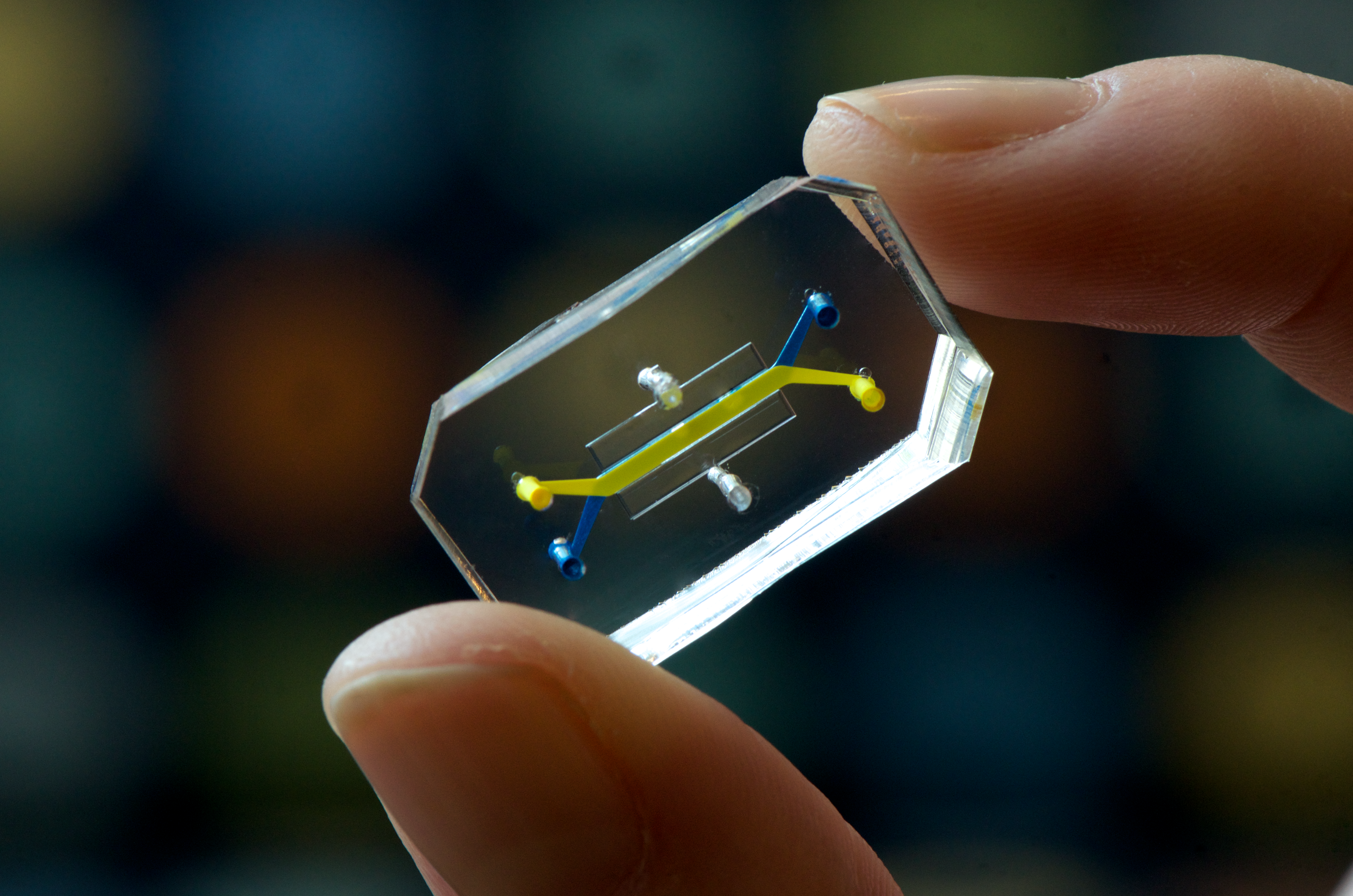Annual awards and exhibition recognize the most innovative, interesting, high-impact and forward-looking designs from all over the world
(BOSTON and LONDON) — The Wyss Institute’s human organs-on-chips have been nominated for Design of the Year 2015 by the Design Museum in London and will be put on display as part of the museum’s Designs of the Year 2015 Exhibition.
The Designs of the Year Exhibition, which will be open to the public March 25 to August 16, 2015, will feature 76 designs selected by the museum for the 2015 award consideration from the pool of candidates nominated by the world’s top design experts, practitioners, curators and academics. Representing human organs-on-chips in the exhibit will be a display of the Wyss’ human lung, gut and liver chips.

Now in its eighth year, the annual Designs of the Year awards celebrate several categories of design; nominations are identified in Architecture, Digital, Fashion, Product, Transport, Graphics. Winners from each category will be unveiled in May 2015 and the overall winner in June 2015.
The living organ-on-a-chip microdevices that emulate human organ-level functions are nominated in the Product category for which they have been recognized for their potential ability to deliver transformative change to human health and pharmaceutical care. They stand to replace animal testing as a faster, less expensive, less controversial and much more accurate means to predict whether new drug compounds will be successful in human clinical trials.
The first human organ-on-a-chip, the lung-on-a-chip, was designed at the Wyss Institute in 2010 by the Institute’s Founding Director Donald Ingber, M.D., Ph.D., and Dan Dongeun Huh, Ph.D., who was a Wyss Technology Development Fellow at the time of its invention. Since then, several additional human organs-on-chips have been developed through leveraging the success of that initial design. In 2014, the startup company Emulate, Inc., sprang out of the Wyss Institute in order to commercialize human organs-on-chips.
“My career-long appreciation for art and design principles has driven my scientific focus on the roles that natural design and biomechanics play in the formation of normal tissues and organs, as well as in disease development,” said Ingber. “A crucial part of the design of human organs-on-chips is their ability to mechanically mirror the dynamic physical microenvironment found in living organs, including flowing fluids and tissue distortion similar to that seen during breathing and peristalsis, which enables them to replicate whole-organ functions.”
Human organs-on-chips are built using an innovative microfabrication process adapted from the computer chip industry, in which multi-layer photolithography is used to manufacture memory-stick-sized blocks of crystal-clear, flexible silicone rubber that contain hollow microchannels. These microchannels are then lined with living organ cells and blood capillary cells under fluid flow and manipulated mechanically using vacuum-powered movements to replicate organ tissues and movements.
- Previous winners of the Design of the Year awards have been:
- 2014: Heydar Aliyev Center by Zaha Hadid Architects
- 2013: GOV.UK – UK Government website by GDS
- 2012: London 2012 Olympic Torch by Edward Barber and Jay Osgerby
- 2011: Plumen 001 by Samuel Wilkinson and Hulger
- 2010: Folding Plug by Min-Kyu Choi
- 2009: Barack Obama Poster by Shepard Fairey
- 2008: One Laptop Per Child by Yves B_har